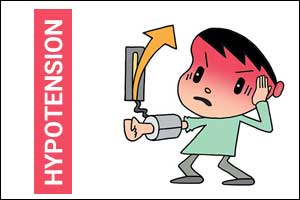- Home
- Editorial
- News
- Practice Guidelines
- Anesthesiology Guidelines
- Cancer Guidelines
- Cardiac Sciences Guidelines
- Critical Care Guidelines
- Dentistry Guidelines
- Dermatology Guidelines
- Diabetes and Endo Guidelines
- Diagnostics Guidelines
- ENT Guidelines
- Featured Practice Guidelines
- Gastroenterology Guidelines
- Geriatrics Guidelines
- Medicine Guidelines
- Nephrology Guidelines
- Neurosciences Guidelines
- Obs and Gynae Guidelines
- Ophthalmology Guidelines
- Orthopaedics Guidelines
- Paediatrics Guidelines
- Psychiatry Guidelines
- Pulmonology Guidelines
- Radiology Guidelines
- Surgery Guidelines
- Urology Guidelines
Concomitant use of common antibiotic and muscle relaxant may lead to serious fall in BP

Concomitant use of a common antibiotic and muscle relaxant may lead to a serious fall in BP. The commonly used muscle relaxant tizanidine which when used in conjunction with Ciprofloxacin can lower blood pressure drastically.
Tizanidine is used to treat muscle spasms caused by certain conditions such as multiple sclerosis, spinal cord injury and general injuries of the musculoskeletal system. Tizanidine does not cure these problems, but it may allow other treatment, such as physical therapy, to be more helpful in improving your condition. It works by helping to relax the muscles.
Ciprofloxacin is used to treat a variety of bacterial infections. Ciprofloxacin belongs to a class of drugs called quinolone antibiotics. It works by stopping the growth of bacteria and is bacteriostatic in nature.
Doctors should be aware of the risk and should, therefore, avoid co-prescription of muscle relaxant tizanidine and antibiotic ciprofloxacin. All the major classes of antihypertensive drugs have important interactions with other drugs, but these are seldom important with recently approved antihypertensive drugs.
Tizanidine is metabolized by the enzyme CYP1A2, and concurrent use of tizanidine and a CYP1A2 inhibitor, such as ciprofloxacin, greatly increases tizanidine plasma concentrations. Despite package insert warnings, tizanidine and CYP1A2 inhibitors are commonly co-prescribed.
Cecilia Chung, MD, and colleagues used electronic health records to study the risk of hypotension (low blood pressure) in patients taking tizanidine or cyclobenzaprine (another muscle relaxant) concurrently with a strong CYP1A2 inhibitor.
They found that severe hypotension occurred more often in the tizanidine group than the cyclobenzaprine group. The risk of severe hypotension was higher in patients with more comorbidities and those who used three or more antihypertensive drugs.
The findings, reported in the March issue of Clinical Pharmacology & Therapeutics, demonstrate an interaction between tizanidine and strong CYP1A2 inhibitors in routine clinical practice. Clinicians should avoid co-prescribing these medications, particularly in patients at higher risk of severe hypotension, the authors conclude.
It is therefore important to consider drug interactions when the cause of hypotension is unknown.

Disclaimer: This site is primarily intended for healthcare professionals. Any content/information on this website does not replace the advice of medical and/or health professionals and should not be construed as medical/diagnostic advice/endorsement or prescription. Use of this site is subject to our terms of use, privacy policy, advertisement policy. © 2020 Minerva Medical Treatment Pvt Ltd